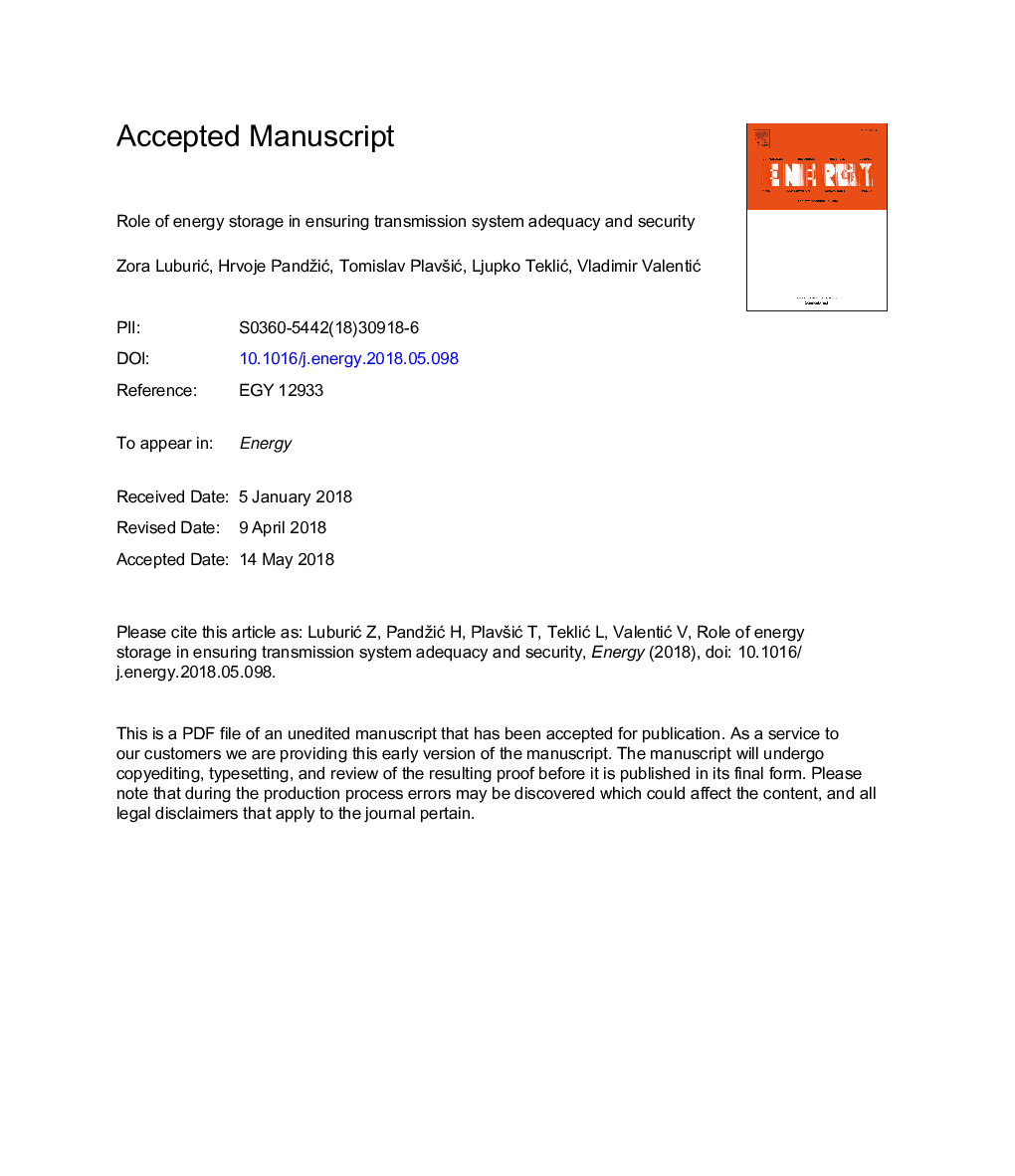| Article ID | Journal | Published Year | Pages | File Type |
|---|---|---|---|---|
| 8071398 | Energy | 2018 | 15 Pages |
Abstract
The main purpose of a Transmission System Operator is to ensure stabile, reliable and efficient operation of its power system. Large-scale integration of renewable energy sources has introduced additional challenges to active control of transmission power systems. Traditionally, generation adequacy has been achieved through investments in generating units and transmission adequacy through investments in transmission lines. However, energy storage can be regarded as both the generation asset, as it reduces peak load and acts as a generator when injecting electricity into the network, and transmission asset, as it can move electricity in time thus reducing congestion and curtailment of renewable energy sources. This paper examines the role of energy storage in increasing power system adequacy and security. A method is proposed to define the charging/discharging schedule of energy storage after a contingency in order to preserve the system within the operating limits and to provide the system operator enough time to redispatch the system and relieve the overloaded lines. The method is applied to an actual part of the Croatian power system using scenarios that describe representative network states. The simulations are performed in a transmission operations and planning software using actual operating data. The results are analysed in details and conclusions on the role of the energy storage in providing transmission system adequacy and security is assessed.
Keywords
Related Topics
Physical Sciences and Engineering
Energy
Energy (General)
Authors
Zora LuburiÄ, Hrvoje PandžiÄ, Tomislav PlavÅ¡iÄ, Ljupko TekliÄ, Vladimir ValentiÄ,
